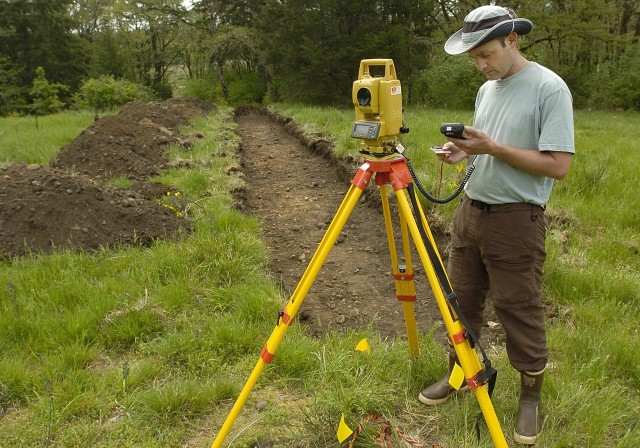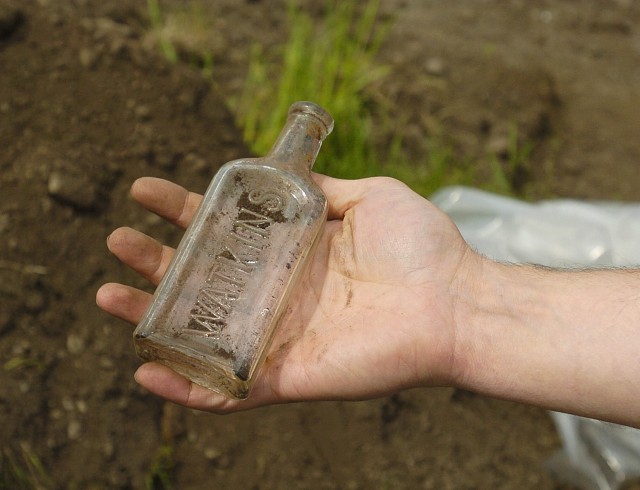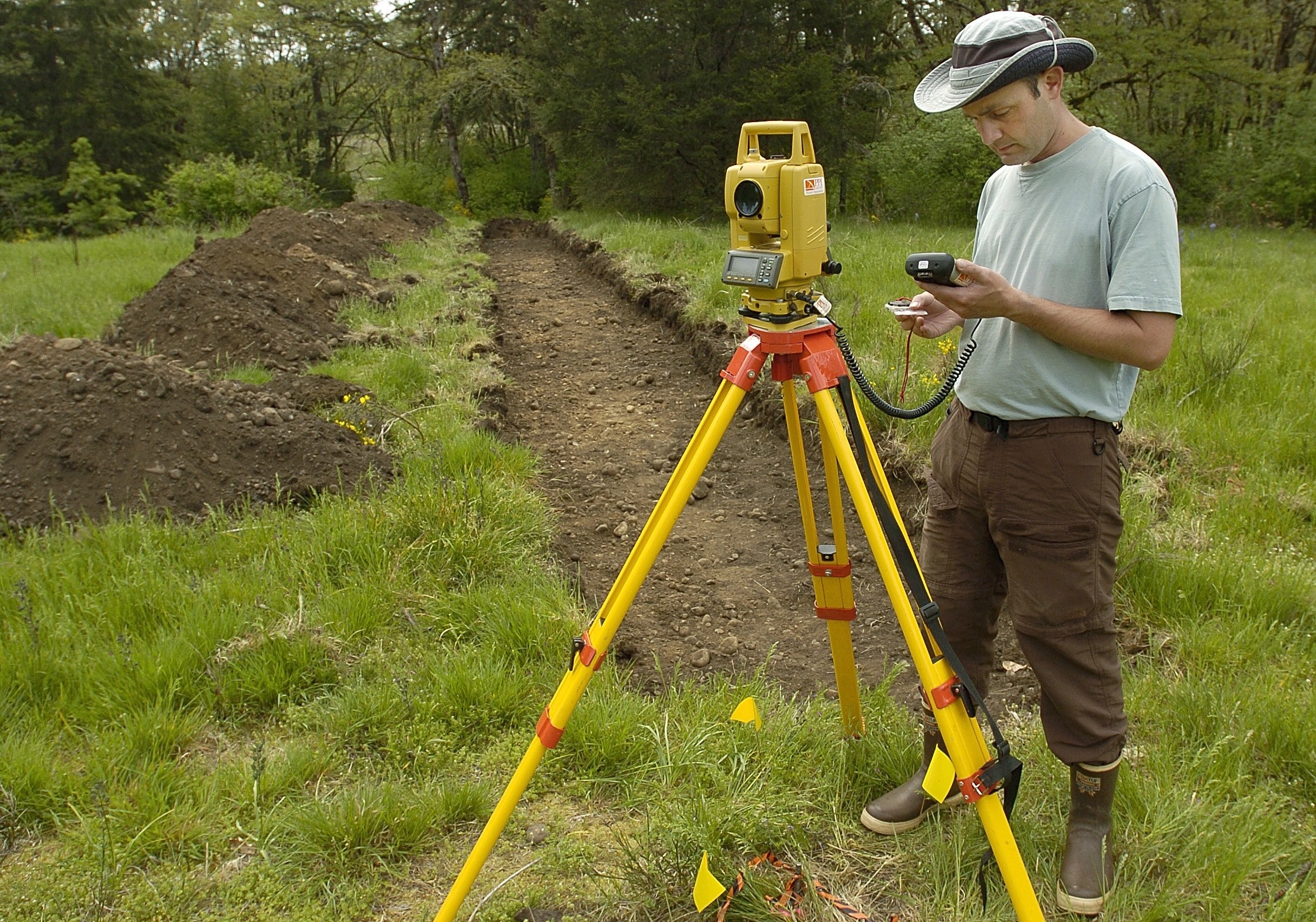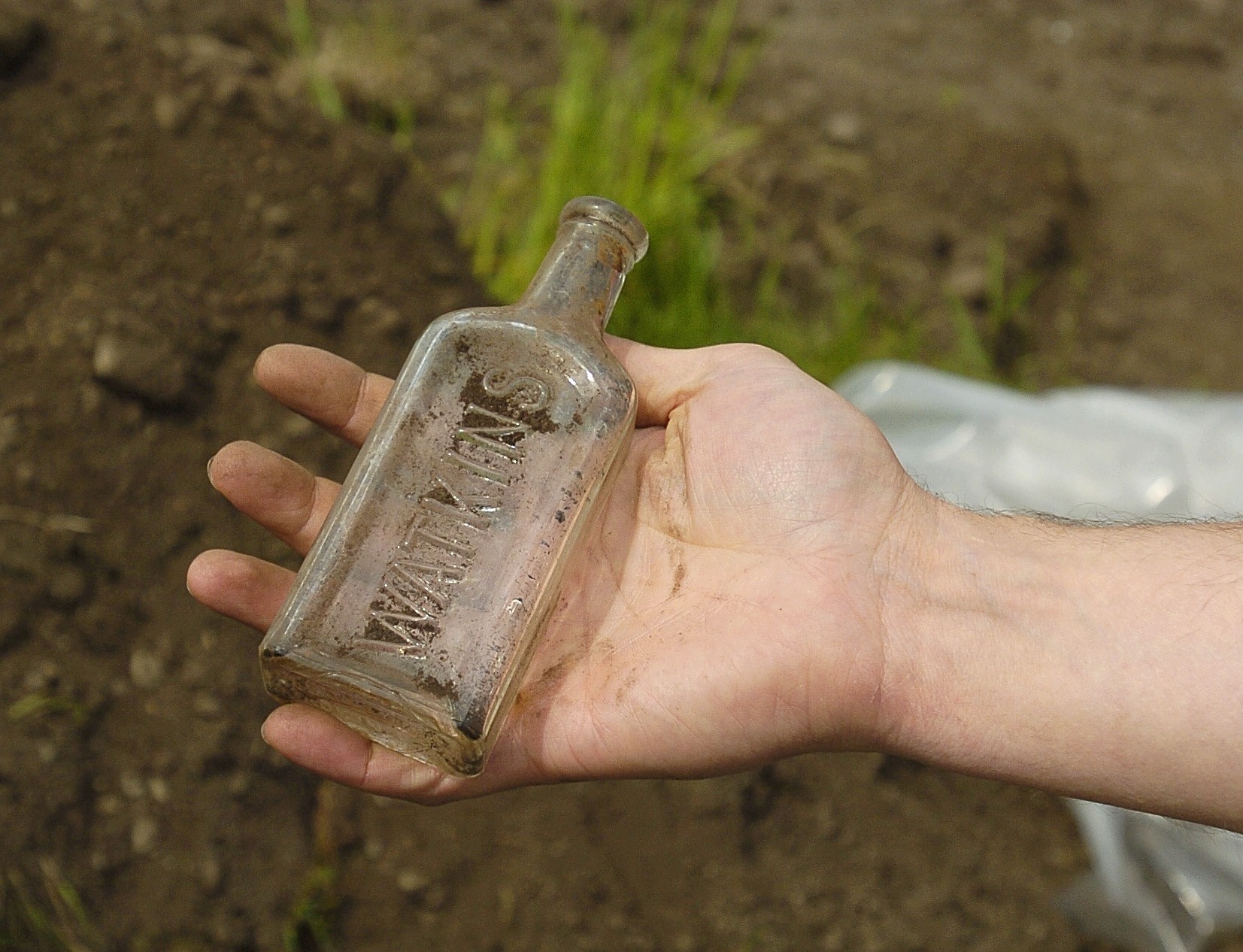FORT LEWIS, Wash. - Down a small berm, back in the woods near Johnson Marsh, buried under more than a century of debris, lay just what Fort Lewis' Cultural Resources staff and a team of archaeologists were looking for: trash.
The archaeologists combed an area around the marsh last week looking for the remnants of some 19th-century hop farms that once stood on what is now Fort Lewis land. The team unearthed a trash pile near one of the farmsteads that was full of broken dishes, glass and ceramics that could reveal more about the people who lived and worked on the farms and how the hop boom, and the wealth associated with it, might have affected them and the land.
"We're looking for a couple of different things," said Brad Bowden, associate archeologist with Historical Research Associates. One of those was domestic artifacts. "Not so much artifacts related to producing hops, but every-day life kinds of artifacts, because we had some idea that, because they were very successful in the hop industry, that they should have had some nicer stuff, nicer pottery, home furnishings."
The team was also looking for the features on the farmsteads to see if there was anything left of the buildings. On one of the sites, Bowden and his colleagues found the remnants of what they believe is a hop kiln that would have been used to dry the hops.
To the untrained eye, the contents of the farm house garbage pile looks like nothing more than that, but to the archeologists, it is a story waiting to be told.
"Archeology is detective work, in a sense," said Dale Sadler, assistant cultural resources manager for Fort Lewis Directorate of Public Works.
For example, hops were harvested around September, which was also prime time for canning, a common task for the women of the day. But, if the women were busy with the hop farming, the archeologists might expect to find metal cans instead of canning jars in the trash heaps, which would indicate they were buying canned goods.
"If the women were heavily involved in the hop production, or they are making so much money now, she doesn't have to spend all her time canning, they can buy canned foods from the store," Sadler said. "There may be some evidence of that."
Hop farming caught on in the Fort Lewis area in the 1860s. It was tremendously profitable and required a relatively small capital outlay. A farmer could become tremendously wealthy, said Bret Ruby, cultural resources manager for Fort Lewis Directorate of Public Works. The area's hop farming ventures peaked in the 1880s when the hop harvest in Europe failed, creating a demand for American hops. But the ill-fated boom declined in the 1890s after bugs and mold destroyed most of the crops.
The project allowed Fort Lewis' Cultural Resources staff to work closely with the Nisqually tribe because Native American labor was often used to harvest the hops, Ruby said.
"We spent a lot of time talking with Nisqually elders and people down on the reservation that actually participated in hop farming and it was part of their family tradition going back 100 years or more," Ruby said.
The ongoing project to uncover more information about hop farming operations on Fort Lewis is one example of how the Cultural Resources Department is working to preserve the post's history.
There are about 350 archeological sites on Fort Lewis, according to Ruby. "We've been trying to systematically go through and determine which ones are really important, really significant, really worthy of preservation, and separate those from the ones that might already be too damaged, or maybe a very common sort of property," Ruby said.
The hop farms presented a unique opportunity to look at hop farming as a whole, rather than individual farms, he said.
"This was an opportunity to take a theme, a type of farming, and look at a whole set of sites together and, hopefully, be able to learn more by looking at them thematically," Ruby said.
Doing historical archeology on Fort Lewis also helps tell the stories of ordinary people.
"You get to tell the stories of the people who weren't necessarily famous, they're not the people who made it into the history books," Ruby said. While the farmers might not have thought their lives were particularly noteworthy, "their lives are important and there are things that we can learn from them."
Rachel Young: rachel.young5@us.army.mil






Social Sharing